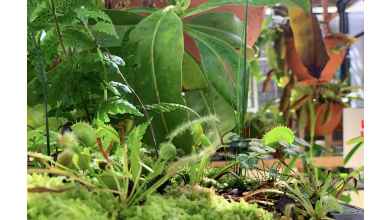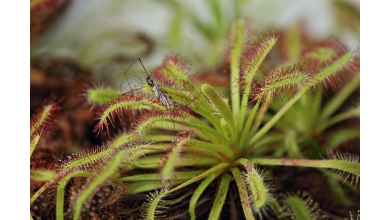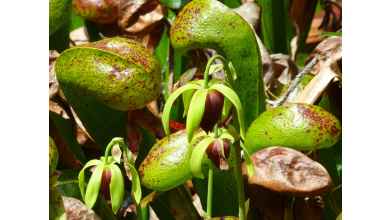Carnivorous Plant Care Guides: Everything You Need to Know
Are you fascinated by the beauty and uniqueness of carnivorous plants? Do you want to learn how to care for these exotic plants? If so, you've come to the right place. In this article, we'll guide you through the process of caring for your carnivorous plants, covering everything from choosing the right soil to providing adequate water and light. So, let's dive in!
Table of Contents
- Introduction: What are Carnivorous Plants?
- Why Choose Carnivorous Plants?
- Choosing the Right Soil for Your Carnivorous Plants
- Watering Your Carnivorous Plants
- Providing the Right Light for Your Carnivorous Plants
- Feeding Your Carnivorous Plants
- Repotting Your Carnivorous Plants
- Common Problems and Solutions for Carnivorous Plants
- Tools and Supplies for Carnivorous Plant Care
- Top 5 Carnivorous Plants for Beginners
- How to Propagate Carnivorous Plants
- Conclusion
- FAQs
Introduction: What are Carnivorous Plants?
Carnivorous plants are a unique type of plant that has evolved to supplement their nutrient-poor environments by catching and digesting prey, such as insects and spiders. There are over 700 known species of carnivorous plants, including Venus Flytraps, Pitcher Plants, and Sundews.
Why Choose Carnivorous Plants?
Carnivorous plants are not only fascinating but also make great houseplants. They can thrive in a variety of indoor environments, and their ability to catch insects and spiders make them great natural pest control. Additionally, they are easy to care for and can add an interesting and exotic touch to any home or office.
Choosing the Right Soil for Your Carnivorous Plants
Carnivorous plants require a special type of soil, known as peat moss. Peat moss is acidic and has a low nutrient content, which is ideal for these plants. You can also add perlite or sand to the soil mix to improve drainage.
Watering Your Carnivorous Plants
Carnivorous plants require distilled water or rainwater for optimal growth. Tap water contains minerals that can harm these plants. It's important to keep the soil moist but not waterlogged. Avoid letting the soil dry out completely, as this can damage the plant's roots.
Providing the Right Light for Your Carnivorous Plants
Most carnivorous plants require bright, indirect sunlight. However, some species, such as Venus Flytraps, require full sun for at least 4-6 hours per day. It's important to research the specific light requirements of your carnivorous plant to ensure optimal growth.
Feeding Your Carnivorous Plants
Carnivorous plants obtain their nutrients from catching and digesting prey, such as insects and spiders. While some species can survive without being fed, others may require occasional feeding. Avoid feeding your carnivorous plant meat, as this can harm the plant. Instead, feed them small insects, such as fruit flies or crickets.
Repotting Your Carnivorous Plants
Carnivorous plants should be repotted every 1-2 years, or when the soil becomes too compacted. When repotting, use the same type of soil as the plant's original pot, and be careful not to damage the plant's roots.
Common Problems and Solutions for Carnivorous Plants
Some common problems for carnivorous plants include pests, such as spider mites and fungus gnats, and fungal infections. To prevent pests, avoid overwatering and keep the plant's environment clean. To treat fungal infections, remove any affected leaves and treat the plant with a fungicide.
Tools and Supplies for Carnivorous Plant Care
To care for your carnivorous plants, you'll need a few basic tools and supplies, including:
- Distilled water or rainwater
- Peat moss soil mix
- Perlite or sand (optional)
- Fertiliser-free insecticide
- Fungicide
- Tweezers (for feeding)
- Spray bottle (for misting)
Top 5 Carnivorous Plants for Beginners
If you're new to carnivorous plant care, here are some beginner-friendly species to consider:
- Venus Flytrap - known for its iconic trap-like leaves, Venus Flytraps require full sun and moist soil.
- Sundew - this unique plant has sticky tentacle-like leaves that catch insects. Sundews require bright, indirect light and moist soil.
- Pitcher Plant - these plants have a deep cavity that captures insects. Pitcher Plants require bright, indirect light and moist soil.
- Butterwort - this small, easy-to-care-for plant has sticky leaves that trap insects. Butterworts require bright, indirect light and moist soil.
- Cobra Plant - this unique plant has tube-like leaves that resemble a cobra's head. Cobra Plants require bright, indirect light and moist soil.
How to Propagate Carnivorous Plants
Carnivorous plants can be propagated through division or leaf cuttings. To divide a plant, carefully remove it from its pot and gently separate the root ball into smaller sections. To take a leaf cutting, cut off a healthy leaf and plant it in moist soil.
Caring for carnivorous plants may seem intimidating, but it's actually quite simple. By following the tips outlined in this article, you can enjoy the beauty and uniqueness of these fascinating plants in your own home. Remember to choose the right soil, provide adequate water and light, and feed your plant as needed. With a little care and attention, your carnivorous plant will thrive.






